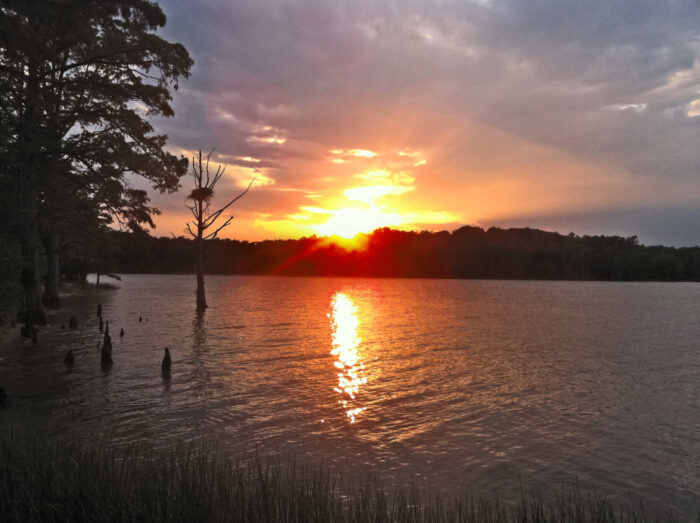My father was born and raised in Isle of Wight County, Virginia. He and my mother were married in Portsmouth, and after my sister and I were born, moved to Richmond and then Williamsburg, Virginia, just off of Jamestown Road. The distance between my father’s birthplace south of the James and our home was not far as the crow flies, but culturally it felt far – a journey, perhaps, from the old South to the new. And while my father remained close to his family in Isle of Wight, everyone understood that he had flown the coop by obtaining a master’s degree from the University of Virginia and settling in the relatively sophisticated town of Williamsburg.
When he died at 90 a few years ago, he left behind clear instructions for handling his modest estate and had told us months before his passing that he wanted to be cremated. But he left no specific wishes for what to do with his ashes. The funeral guests had all returned to their homes, and there we were in the Williamsburg Lodge with a box and one task remaining.
We decided to scatter his ashes somewhere along the James River, the river we had crossed countless times on the ferry at Jamestown, the broad waterway that symbolized so much to us as a family. But where on the James? We weren’t even sure it was legal. I started searching on Google maps, looking for a place that offered access to the water along with some privacy. On the south side of the James I found a spot not far from the ferry landing on Gray’s Creek, just across from Swann’s Point and a short distance from Smith’s Fort and the Rolfe-Warren house.
We followed a dirt road to a small sandy beach jutting out into the water. There was no one around except for a teenage couple making out in a car parked at the end of the road. With the sun going down and perhaps, a half hour of light remaining, we walked along the beach until we came upon a dead tree standing at the edge of the water with a hawk’s nest in the crook of several branches. This was the place. There were no boats or houses in sight. It looked just as it must have looked to the English settlers who had arrived there in the early 1600s.
Recently, I began exploring my family history and discovered that my ancestor, William Rose, had arrived in Jamestown before 1650 and had acquired land directly next to the property owned by John Rolfe and Pocahontas, given to them as a gift by Chief Powhatan. It was on Gray’s Creek, a short distance from where we had – without knowing any of this history – scattered my father’s ashes.
